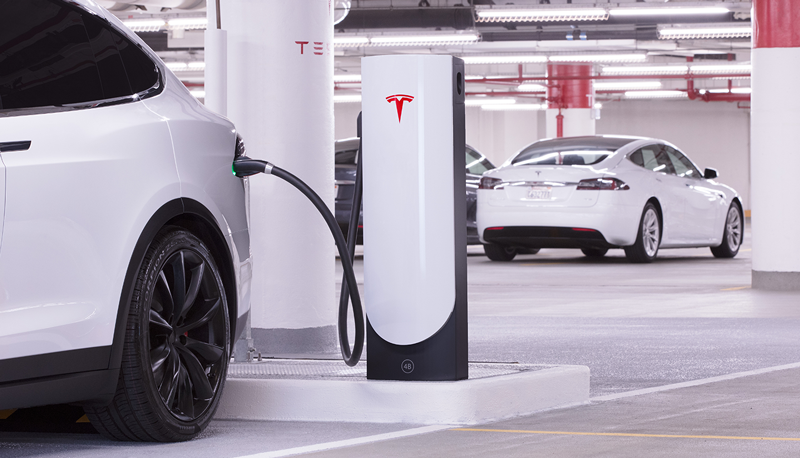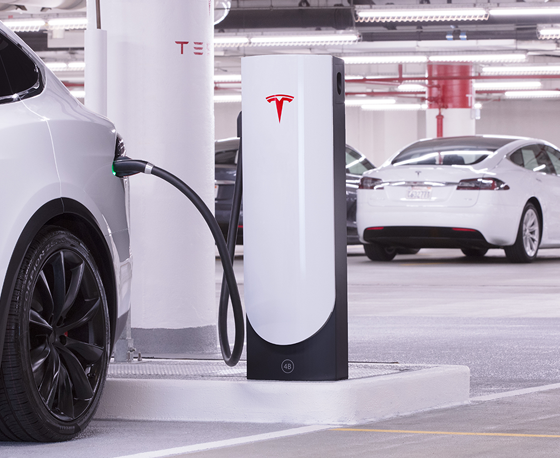

Lifestyle
These cities are driving electric vehicle growth worldwide
What cities are driving the electric vehicle revolution around the world? This question was just addressed by the International Council on Clean Transportation (ICCT). It turns out that their recent report includes: “cities with the highest electric vehicle uptake through 2016 and examines the associated local policies, incentives, and infrastructure that have helped spur electric vehicle sales growth.” So where are these exceptional cities? Let’s dive in to the ICCT’s report to find out.
 |
Above: Cars like the Nissan Leaf and Tesla Model S are becoming more common on today’s city streets (Image: U.S. Department of Energy)
The report notes that, “Electric vehicle sales are increasing across almost all markets, but are still disproportionately concentrated in a small number of major markets.” To that end, the report identifies 20 cities that are responsible for a whopping 40% of electric vehicles. The ICCT names these 20 their electric vehicle capital cities.
 |
Above: Cumulative EV sales expressed as percentages of global EV stock through 2016 (Source: ICCT)
So who does this report name as the EV capital of the world? There are a few answers to that question, but, “Los Angeles leads the world with more than 100,000 cumulative electric vehicle sales.” That said, China’s Shanghai and Beijing are not far behind LA. However, when looking at electric vehicle sales shares: “The Norwegian cities of Bergen and Oslo… [led with] 36% and 33% respectively.”
 |
Above: Cumulative EV sales and sales shares in ICCT’s EV “capital cities” in 2016 (Source: ICCT)
Another key factor for the success of electric vehicles in these cities is access to EV charging infrastructure. Although the majority of charging occurs at home or work, the report notes that public “charging infrastructure is a key enabler and driver of the electric vehicle market.” EV infrastructure improves access to more charge points and adds to the ease (and enjoyment) of road trips.
 |
Above: The BMW i3 and Tesla Model S park-and-charge (Image: Sierra Club)
So which city wins for EV charging infrastructure? Cities in: “Norway and the Netherlands have the highest concentration of public charge points… [but importantly] cities in China have a much higher share of DC fast charge points, at 16%–45% of all public charge points.” Of course, it’s important to note that Tesla owners enjoy additional benefit from the company’s proprietary Supercharger network.
 |
Above: Looking at EV charging points in electric vehicle capital cities (Source: ICCT)
In addition, the report notes that public policies that incentivize EV ownership are clearly “correlated with higher electric vehicle uptake.” Not surprisingly, these top 20 cities benefit from financial incentives often determined at the national level. The following table (see below) shows ICCT’s assigned value of total financial incentives for EVs in each capital city. So where does the financial incentive value for EV ownership spike the most? Norway’s Bergen and Oslo shine here — rising high above other cities worldwide.
 |
Above: A look at the total financial incentive value for electric cars, by EV capital city (Source: ICCT)
What conclusions can we draw from the ICCT’s report? “These cities are each in their own way helping to overcome electric vehicle barriers, propelling the market forward, and leading by example.” That said, what can we learn from these trailblazing cities? “The path ahead toward full electrification will surely require sustained efforts with policy, much greater electric vehicle infrastructure build-out, and broader awareness as lower-cost and longer-range electric vehicles enter the fleet.”
===
Note: Article originally published on evannex.com, by Matt Pressman

Lifestyle
Tesla Model S Plaid battles China’s 1500 hp monster Nurburgring monster, with surprising results
There is just something about Tesla’s tuning and refinement that makes raw specs seem not as game-changing.

The Tesla Model S Plaid has been around for some time. Today, it is no longer the world’s quickest four-door electric sedan, nor is it the most powerful. As per a recent video from motoring YouTube channel Carwow, however, it seems like the Model S Plaid is still more than a match for some of its newer and more powerful rivals.
The monster from China
The Xiaomi SU7 Ultra is nothing short of a monster. Just like the Model S Plaid, it features three motors. It also has 1,548 hp and 1,770 Nm of torque. It’s All Wheel Drive and weighs a hefty 2,360 kg. The vehicle, which costs just about the equivalent of £55,000, has been recorded setting an insane 7:04.957 at the Nurburgring, surpassing the previous record held by the Porsche Taycan Turbo GT.
For all intents and purposes, the Model S Plaid looked outgunned in Carwow’s test. The Model S Plaid is no slouch with its three motors that produce 1,020 hp and 1,420 Nm of torque. It’s also a bit lighter at 2,190 kg despite its larger size. However, as the Carwow host pointed out, the Model S Plaid holds a 7:25.231 record in the Nurburgring. Compared to the Xiaomi SU7 Ultra’s record, the Model S Plaid’s lap time is notably slower.
Real-world tests
As could be seen in Carwow’s drag races, however, Tesla’s tech wizardry with the Model S Plaid is still hard to beat. The two vehicles competed in nine races, and the older Model S Plaid actually beat its newer, more powerful counterpart from China several times. At one point in the race, the Xiaomi SU7 Ultra hit its power limit due to its battery’s temperature, but the Model S Plaid was still going strong.
The Model S Plaid was first teased five years ago, in September 2020 during Tesla’s Battery Day. Since then, cars like the Lucid Air Sapphire and the Xiaomi SU7 Ultra have been released, surpassing its specs. But just like the Model Y ended up being the better all-rounder compared to the BYD Sealion 7 and the MG IM6, there is just something about Tesla’s tuning and refinement that makes raw specs seem not as game-changing.
Check out Carwow’s Model S Plaid vs Xiaomi SU7 drag race video below.
Lifestyle
500-mile test proves why Tesla Model Y still humiliates rivals in Europe
On paper, the BYD Sealion 7 and MG IM6 promised standout capabilities against the Model Y.

BYD is seeing a lot of momentum in Europe, so much so that mainstream media has taken every opportunity to argue that the Chinese automaker has beaten Tesla in the region. But while BYD sales this year in Europe are rising and Tesla’s registrations remain challenged, the raw capabilities of vehicles like the Model Y are difficult to deny.
This was highlighted in a 500-mile challenge by What Car? magazine, which showed that the new Tesla Model Y is more efficient, cheaper to run, and more reliable than rivals like the BYD Sealion 7, and even the nearly 400 KW-charging MG IM6.
Range and charging promises
On paper, the BYD Sealion 7 and MG IM6 promised standout capabilities against the Model Y. The Sealion 7 had more estimated range and the IM6 promised significantly faster charging. When faced with real-world conditions, however, it was still the Model Y that proved superior.
During the 500-mile test, the BYD nearly failed to reach a charging stop, arriving with less range than its display projected, as noted in a CarUp report. MG fared better, but its charging speeds never reached its promised nearly-400 kW charging speed. Tesla’s Model Y, by comparison, managed energy calculations precisely and arrived at each stop without issue.
Tesla leads in areas that matter
Charging times from 25% to 80% showed that the MG was the fastest at 17 minutes, while Tesla and BYD were close at 28 and 29 minutes, respectively. Overall efficiency and cost told a different story, however. The Model Y consumed 19.4 kWh per 100 km, compared to 22.2 for MG and 23.9 for BYD. Over the full trip, Tesla’s charging costs totaled just £82 thanks to its supercharger network, far below BYD’s £130 and MG’s £119.
What Car? Magazine’s testers concluded that despite BYD’s rapid sales growth and the MG IM6’s seriously impressive charging speeds, Tesla remains the more compelling real-world choice. The Model Y just offers stability, efficiency, and a proven charging infrastructure through its Supercharging network. And as per the magazine’s hosts, the Model Y is even the cheapest car to own among the three that were tested.
Watch What Car? Magazine’s 500-mile test in the video below.
Lifestyle
Tesla Cybertruck slapped with world’s least intimidating ticket, and it’s pure cringe
One cannot help but cringe and feel second-hand embarrassment at the idea of a person just driving around with a stack of these babies.

A Cybertruck parked at Stanford Shopping Center in California was recently hit with what might be the most try-hard piece of paper ever slipped under a wiper blade: a “fake citation” accusing the driver of supporting a “fascist car.”
The note, shared on X by Tesla staff program manager Ryan Torres, quickly made the rounds on X, where it quickly gained attention as an example of how not to protest.
The world’s least intimidating ticket
According to the citation, the supposed “violation” was “driving a fascist car.” The remedial action? Take the bus, call an Uber, or ride a bike. The note also dubbed Elon Musk a “chainsaw-wielding Nazi billionaire.” Now, protests against Tesla and Elon Musk have become commonplace this year, but one cannot help but cringe and feel second-hand embarrassment at the idea of a person just driving around with a stack of fake anti-Tesla/Musk citations.
Torres pointed out the irony himself in his post on X. Tesla currently employs over 140,000 Americans, and SpaceX has put the U.S. firmly back at the top of space technology. As Torres put it, maybe the person behind the world’s least intimidating ticket should “read a book on innovation before vandalizing” other people’s property.
Peak performative clownery
Not to mention that the fake ticket’s logic collapses under its own weight. EVs like the Cybertruck are literally designed to reduce emissions, not “destroy the economy.” If anything, Tesla has bolstered the United States’ economy by fueling jobs in engineering, manufacturing, and clean energy. It’s not the first time a Tesla has been the target of vandalism or politically charged notes, but this one stands out for sheer cringe value.
Torres summed it up neatly: “Peak clownery.” On that point, at least, the citation earns full marks. In a way, though, perhaps cringe fake tickets are not as bad as the literal firebombs that were being thrown at Tesla stores and cars earlier this year because some critics were gleefully misinformed about Elon Musk.








